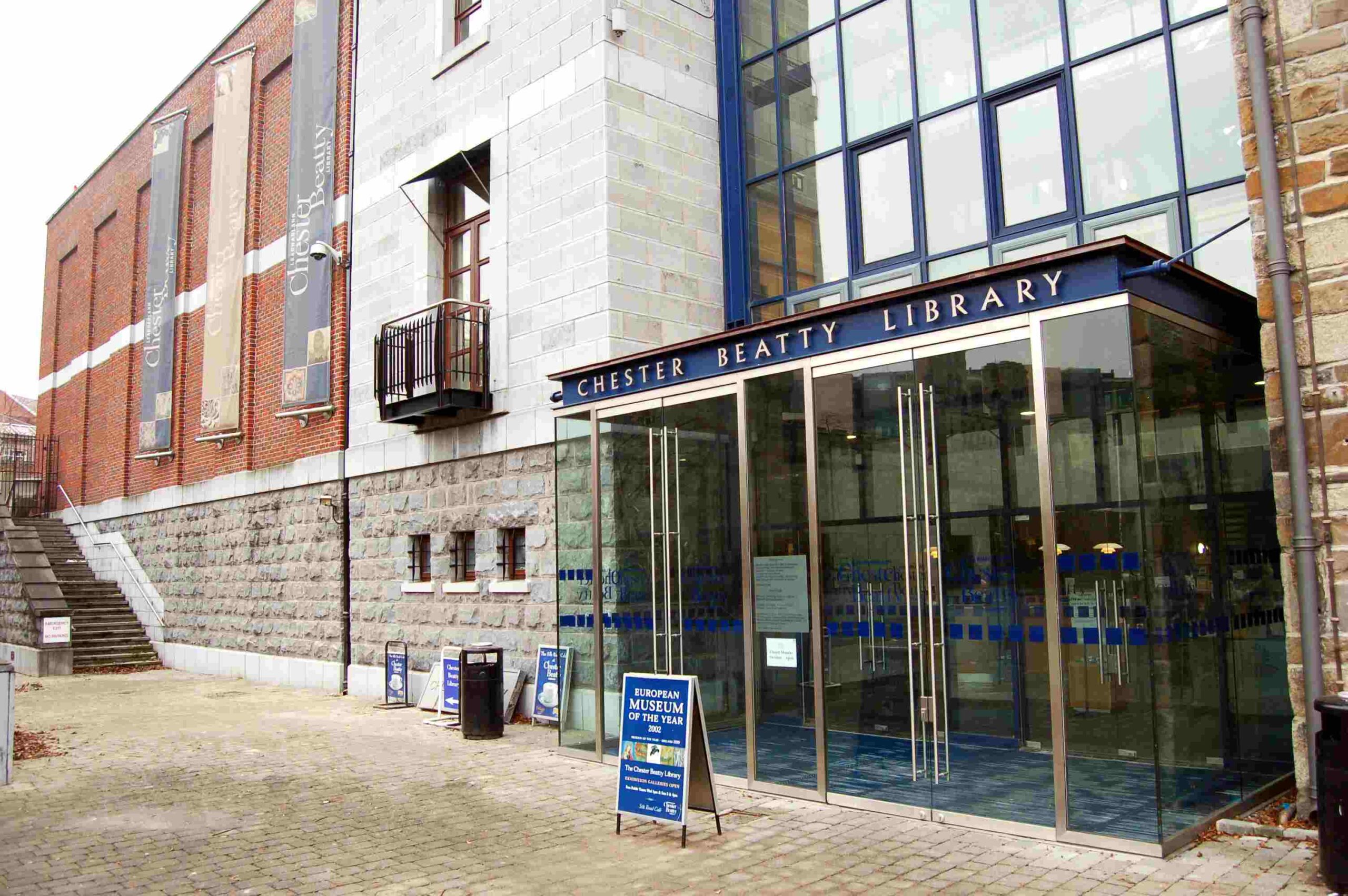
Europe has often been characterised by colonial ventures with museums of foreign artefacts dotting the continent.
While the ownership of antiques and artefacts from the Middle East and the wider Islamic world is a common phenomenon in cities such as London and Paris, the same cannot be said about Ireland and its capital Dublin.
Despite this, there exists a small museum tucked away in the middle of Dublin Castle just waiting to be discovered by enquiring Middle Eastern and Islamic history enthusiasts. Known as the Chester Beatty library, it also boasts extensive biblical and Asian collections.
“It was all a great adventure” were the words of Alfred Chester Beatty, the American-British mining magnate and philanthropist for whom the museum is named.
Beatty graduated from the Columbia University School of Mines, moving to Denver to work in its caves. Having worked his way up in Colorado and through taking a job with the Guggenheim Exploration Company, Beatty became one of the most successful mining magnates in the United States.
In 1912, The New York-born businessman moved to the UK after purchasing the Baroda house in Kensington Palace Gardens. He later offered this as a hospital during the Great War in 1914.
Living in London for almost four decades saw Beatty become what was described as “disillusioned” with the country and he decided to move to Dublin in 1950.
Throughout his life, Beatty avidly collected Islamic and Middle Eastern Manuscripts.
Soon before the outbreak of World War II, he travelled to Egypt for the first time where he became mesmerised by Islamic antiques, which then expanded to Quranic, Biblical and Persian collections.
Beatty passed away in 1962, but prior to this was made the first honorary citizen of Ireland in 1957 for his cultural contributions. He was the first private citizen in the country to be honoured with a state funeral.
The Chester Beatty Library was first founded in the year 1950 after Beatty moved to Dublin, but the museum in its current form opened on the 7th of February 2000.
On the significance of his collections Beatty stated: “ It isn’t the number, it’s the fact that these books are extremely rare, you can go and buy 5,000 oriental manuscripts but they’re just copies … but a lot of these, a great number of them are unknown”.
The museum hosts a large number of manuscripts and paintings in the Arabic language. These range in time from the year 800 to 1871.
Produced in Cairo in 1366, one popular painting is from “The Manual on the Arts of Horsemanship”, where two horsemen charge at each other. Originally composed in Mamluk Damascus, a widely known military encyclopaedia explains beneficial skill sets needed to form an effective cavalry. The painting previously mentioned is from the lesson, “The Use of the Sword”.
The museum also hosts a number of Islamic items spanning from the years of 675 to 1035 CE. There are currently 250 copies or partial copies of the Qur’an at the Chester Beatty Museum. These were produced in a variety of countries such as Iran, Iraq, Syria, India and Turkey.
One of the highlights of the Islamic collections is a description of the prophet (Hilya al-nabi) by the Ottoman calligrapher Hafiz Osman. Osman was widely known for having designed a new format to depict pious texts which came to be known in Turkish as the hilye. This hilye at Chester Beatty is one of the earliest examples of this new format.
February to August of 2022 saw the Museum host a display known as the “Isfahan Exhibition” that explored the life and times of mediaeval Safavid Persia particularly in relation to the bustling city of Isfahan.
The exhibit entitled, “Meeting in Isfahan: Vision and Exchange in Safavid Iran” featured the cosmopolitan urban centre that was Isfahan in the 17th century. Highlights from the Persian collection include segments from the “book of kings” such as the enthroning of gayumars, the mythical first king of the dawn of time.
In a 1962 interview relating to his new found life in Ireland, Beatty fondly remarked, “Well I’ve grown very fond of the country and I enjoyed my life here so much and then I finally decided to build a library and then I finally decided when I die I want to leave it to Ireland.”
While it remains an in depth look into the past, the Museum has a bright future in the 21st century and was voted European Museum of the Year in 2002.






